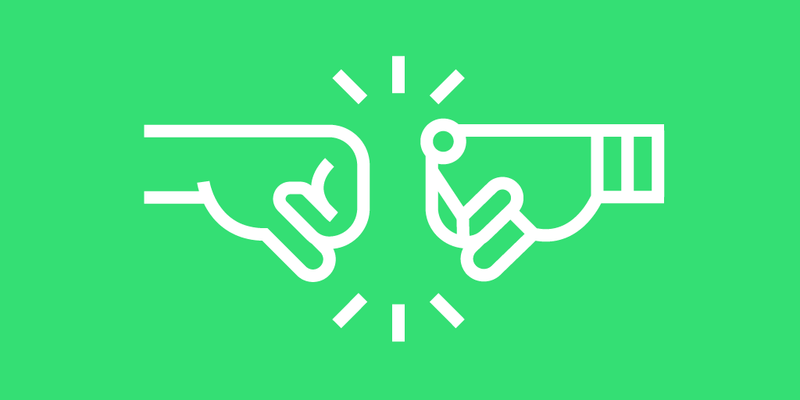Click & collect is an omni-channel retail strategy where shoppers buy online and pick up in store. Hence the name — click and collect.
Click-and-collect customers usually pick up items at either a centralized hub or a dedicated third-party location. This way, click & collect stores have been able to remedy two of the most pressing retail customers complaints: high delivery costs and the inconvenience of waiting.
There are other issues standing in the way, the main one being how to balance automation and the human touch in click & collect.
The growth of click and collect, in numbers
At the moment, click and collect is more widely used in Europe, with 72% of UK shoppers currently use click & collect. The retailers overseas are catching up with the C&C trends, as 49% of US Consumers used click and collect for the first time in 2016, with 71% of US shoppers having used click and collect in the past 12 months.
Overall, 21% of shoppers use click-and-collect services for at least half of their purchases. What’s more, click and collect isn’t being used purely for purchasing devices — Millennials prefer to use click and collect more than delivery for groceries.
It has been forecast that by 2023, US online grocery spending will reach 100 billion dollars. By 2025, 10% of all sales will be fulfilled by click and collect.
Why is click and collect growing more and more popular with shoppers, anyway? Because it offers simple, immediate benefits:
Reduced shipping costs — customers save money by picking up their items at the store, bypassing the shipping rates. This is the key driver for 76% of US retail click-and-collect customers.
Speed of delivery — in-store pickups are often available on a shorter notice than regular delivery. It’s not rare to pick up an item on the same day.
Convenience — while it may sound counterintuitive that click-and-collect is often more convenient than to-the-door delivery, C&C gives you better control over your time.
Assurance — picking up an item at a click-and-collect location gives customers a chance to inspect the item before committing to purchase.
On the retailer side of things, investing in click and collect allows to capitalize on:
Lower operational costs — since shoppers assume delivery costs, retailers are free to invest their resources elsewhere.
Impulse sales — 49% of click & collect users said they were likely to purchase an additional item when collecting their order.
This paints a rather bright picture of click & collects, raising an obvious question: “If it’s so effective, why the hell don’t we have more of it?”
Here’s where we mention the less pleasant side of things.
The dark side of click and collect
Click & collect is a double-edged sword. When wielded properly, it can maximize the benefits for both sides of transactions. But the higher the reward, the higher the risks — and all too often, click & collect turns into trick & neglect.
When asked to select the most important attribute of a click and collect experience, these were the top five:
Quick in-and-out experience – 56%
No waiting in line – 22%
Ease of locating pickup location – 14%
Dedicated pickup counter – 9%
Designated parking spots – 5%
As we can see, the speed of delivery plays a crucial role. In fact, 35% of surveyed click & collect shoppers expressed discontent with long waiting times.
What’s more:
80% of C&C consumers expect to be able to pick up their item in under 10 minutes from the time they enter the store.
27% expect the collections to take no more than 4 minutes.
Subsequently, the most frustration is caused by wait-related issues:
57% of consumers are frustrated when there are long queues for collection.
52% are frustrated when they join the wrong queue.
65% are frustrated when items arrive later than promised or they only have a rough estimate of collection time.
The thing is, many retailers, even in C&C, rely on manual processes to manage orders and purchases. Automating could solve a lot of wait-related problems for click & collect stores, especially considering that the entire C&C process doesn’t really require a human hand.
But, is human touch worth sacrificing for bringing wait numbers down with full-blown automation? Seemingly, this comes down to preference. After all, some people say “tomato”, others say “automate-o”.
(Yes, this joke was bad. Deal with it.)
Taking people out of the equation
Among the US retailers who have moved to the C&C model, Walmart has definitely been the pace-setter, with barely a sign of slowing down.
Walmart’s 2018 Q2 results, for example, showed a whopping 3.8% revenue growth, mostly thanks to online sales — including the company’s new click & collect initiatives. This success can be attributed to Walmar’s piloting of Cleveron’s PackRobot automated package terminals.
Cleveron supplies Walmart with automated pickup towers — special parcel terminals which allows customers to quickly and painlessly pick up their ordered items and go about their way. All the benefits discussed in the first half of this article apply doubly here: this system is fast, cost-efficient as well as helps drive traffic inside the stores and incite other in-store purchases.
A study conducted at Walmart spaces revealed that around 50% of Walmart click & collect users shopped at the store for additional items — meaning additional revenue, on top of the extra comfort provided to both customers and clerks.
Automating the click-and-collect processes has worked out just fine for Walmart. Here’s the problem, though…
You are not Walmart, or Why you need a queuing system
Straight facts: Walmart is the world’s largest retailer, richer than God and arguably a bigger household name.
If you are reading this, chances are, you don’t quite have the same pull.
Walmart can get away with automated pickup towers because it already is an established brand that doesn’t need to prove itself to its customers. A retail player of a smaller scale than Walmart, however, absolutely has to.
If not automation, what then? Two words: human touch.
Or, rather, automation powered by human touch. Okay, this sounds confusing, so let’s start over.
Qminder’s point is that you can both automate the waiting lines, by using a queuing system, while simultaneously providing a more empathetic service. A smart queue management system allows for a smooth delivery experience: a customer walks in, specifies their order and in a few moments picks up their item.
All the other benefits apply here as well: from speed of delivery to improving impulse purchases.
What’s more important is that a queueing system lets to capitalize on the human touch aspect of your business (a greeter, a friendly conversation with a clerk, etc.). It’s not often stated out loud, but what customers crave is a human connection.
An automated pickup tower, no matter how quick it is, simply does not cover this and cannot provide the same cathartic customer experience that a digital queue management system does.
Automation does not have to come at the expense of a genuine human connection. Click & collect can be both fast and emotionally satisfying at the same time, provided you employ a digital queue management system like Qminder.
It empowers a number of key click & collect spaces around the world, including Takealot — South Africa’s largest ecommerce retailer.
Want to learn what all the fuss is about? Sign up for a free trial of Qminder and see for yourself, free of charge.






